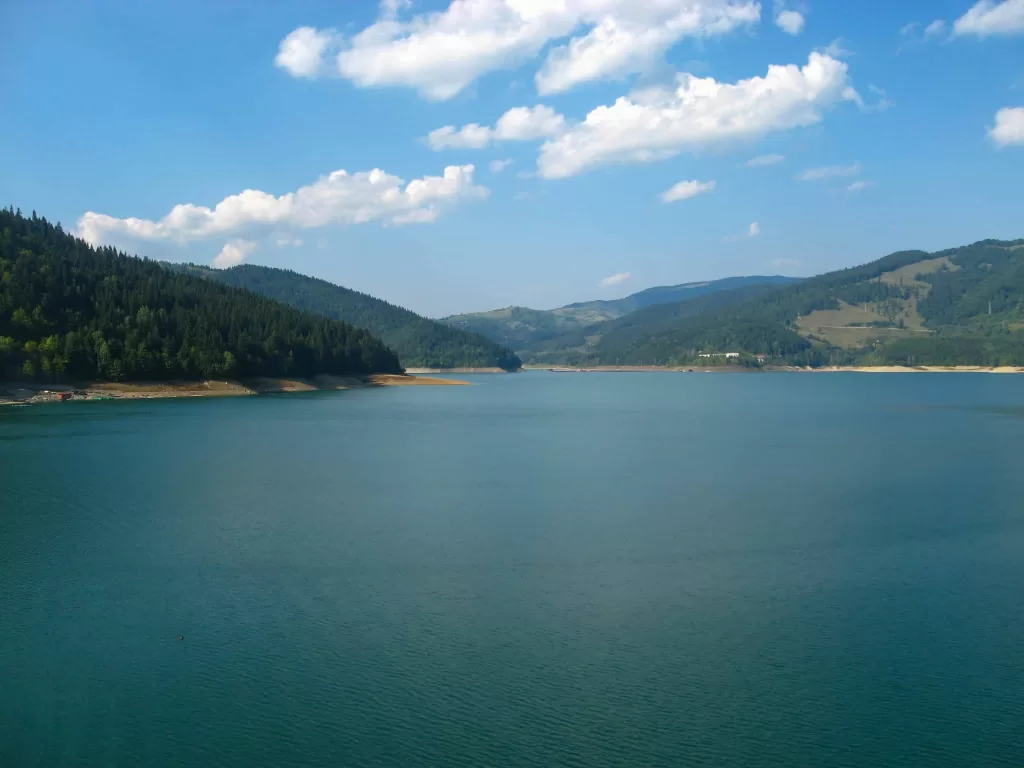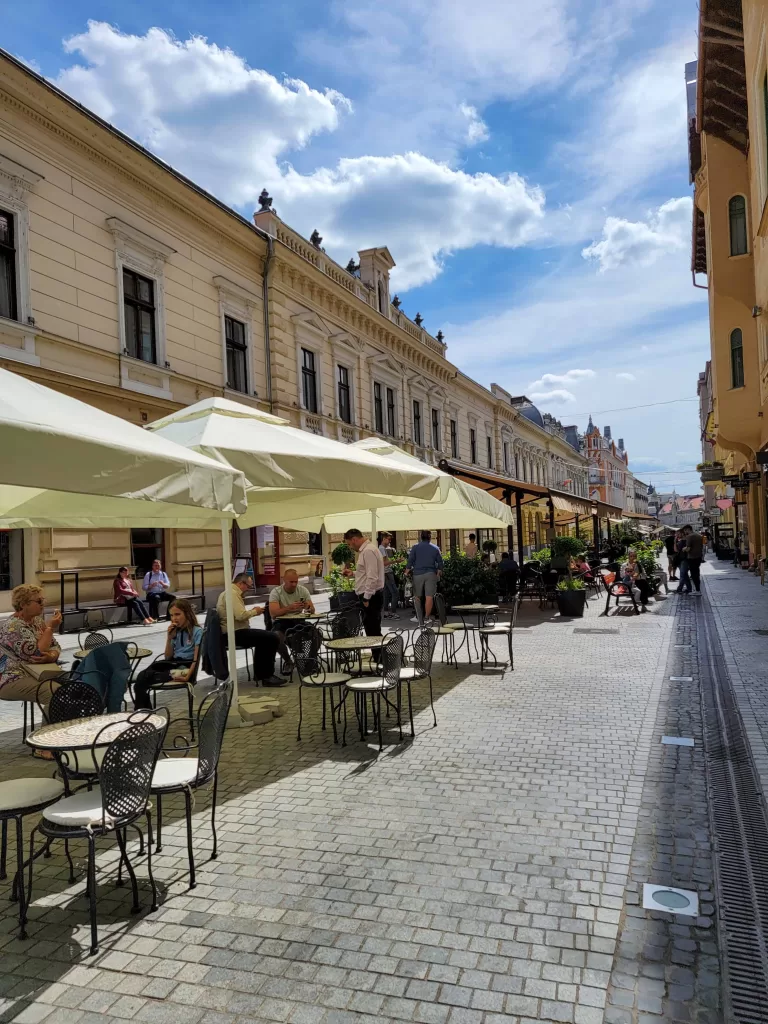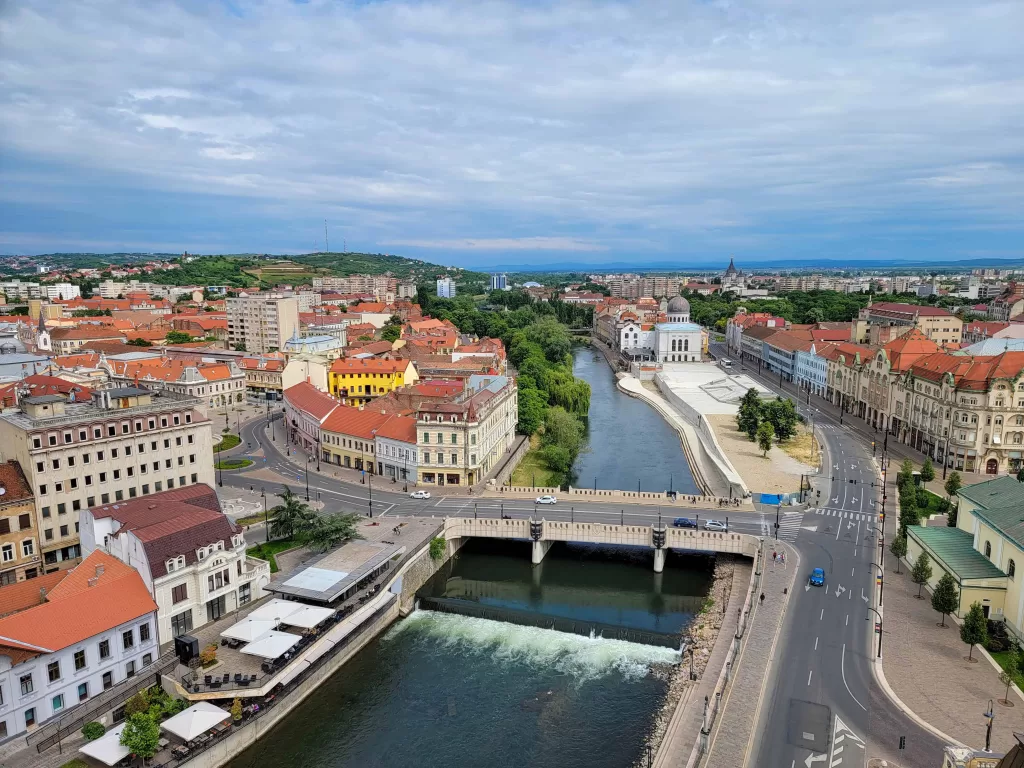Romania is a stunning country that just wasn’t lucky throughout history. It could have been up there with the EU5 countries in terms of GDP, but unfortunately it was located a bit too far East. I was born and raised in Romania and moved to the US for college when I was 18. Besides having lived in the US for almost 14 years, I also visited 18 countries, so I can objectively compare Romania with other countries. I will be debunking myths about Romania so more people know the facts and realize that Romania is a country worth visiting. This post contains affiliate links. When you make a purchase I may get a small commission at no extra cost to you. Find out more here.
History of Romania
Communism
Why do I think Romania wasn’t lucky? Because it was a communist country from 1947 to 1989. What did that mean in practice?
- People couldn’t speak freely. You had to watch what you say about the regime even with family members and friends, who could report you to Securitate, our secret service. Securitate would then throw you in jail.
- People had no choice. You were told what to do, what to think, and how to behave. I think this killed critical thinking for the people of Romania for 4 decades, which is a long time.
The Ceaușescu era
Nicolae Ceaușescu came to power in 1965, and from 1981 to 1989 he imposed austerity steps to pay Romania’s >$10B foreign debt. These austerity steps meant that:
- Food was rationed. People had to wait in line at the local grocery stores to receive bread, milk, sugar, oil, and meat once a week.
- Heating and electricity were often stopped and people suffered during the winter.
- Driving was banned on certain weekends. People were allowed to buy only 30 liters or 7.9 US gallons of gas each month.
- People could watch TV or listen to the radio only for 2-3 hours a day during the afternoon.
- Healthcare staff were cut, which led to one of the highest rates of infant mortality in Europe.
I was born 2 years after the revolution, so I didn’t experience any of this firsthand. But my parents and grandparents did. Listening to their stories is always emotional. I can’t imagine what they had to live through.
However, Ceaușescu was successful in paying Romania’s full foreign debt, something that has not been matched by any other country in the world. But the Romanian people were tired and hungry, and wanted change. So, they started the Revolution in December 1989 and Ceaușescu and his wife were executed on Christmas day that year.
After the 1989 revolution
After the 1989 revolution, Romania had to learn how to become a modern, democratic country, which was not an easy task. People were so scarred by the lack of everything during communism that their first instinct was to get as much money as possible for themselves. Which led to high levels of corruption in the 90’s and an increase in unemployment rates. I think it’s a natural response to scarcity, but unfortunately, that meant just more suffering for most Romanian people.
To be able to provide for their families in this new era a lot of Romanians immigrated to more prosperous Western European and North American countries in the 90’s and 2000’s to work and study. The Romanian diaspora is the fifth largest in the world. The brain drain also affected Romania a lot.
But we’re persevering and developing. And we’re now Eastern Europe’s second-largest economy after Poland. There’s still a lot to work on, but I want to take a moment and celebrate this accomplishment because Romanians didn’t have it easy.

Debunking myths about Romania
Romania is a gorgeous country, and it offers something to all types of travelers. There are castles, the Carpathian mountains, medieval towns, the Black Sea, the Danube Delta and so much more. But it’s so underrated and people decide to skip visiting it because of stereotypes.
So I’ll be debunking myths about Romania to show you that it’s worth visiting. I wrote about the history of Romania before going into the myths so I can put everything in context, and you are aware of our complicated history. Hopefully I’ll convince you to give this country a chance through this article.
Myth #1: Romania is dangerous
It used to be dangerous, but it no longer is. After the 1989 Revolution everyone was trying to make money and stop living in scarcity. And because there was so much corruption and no systems put in place to help people, some people had to resort to scamming and stealing.
Back in the day pickpockets would steal money from you at the airport, on the street, literally anywhere. There is even a song by Romanian rapper Puya saying something like “when you land in Romania, make sure to keep your money close to you”.
Taxi drivers would scam tourists as well. They would always ask for more money than what the price actually was.
But things evolved so much and are so different now. With Romania developing and the economy growing, these things don’t happen anymore. That’s why debunking myths about Romania is so important. I visit Romania every year, and every year it feels more and more like I’m in the West.
Myth #2: Romania is dirty
Not true at all. After living in NYC, and visiting many other cities in Western Europe, I can honestly and objectively tell you that Romania is very clean. Just look through the pictures in this article so you can see for yourself.
Myth #3: Romania is full of gypsies
There are gypsies living in Romania. They are one of Romania’s largest minorities, but they only constitute about 3% of the population.
Some gypsies immigrated from Romania to other Western European countries and they either begged on the streets or stole from people. So, unfortunately, a lot of Western Europeans started to generalize and think that all Romanians behave like this. Which is obviously not true.
I was afraid to tell a Western European I’m from Romania about 10-15 years ago because they would judge you without knowing you. The situation has improved a lot over the recent years. When I was recently in France, Spain, the UK I didn’t get any mean comments or stares when I told people I’m from Romania. Which is great, and it’s proof that people change and with time we all get better at breaking stereotypes.

Myth #4: Romania was part of the USSR
False. Romania was never part of the USSR. It was a soviet aligned country, and the Soviet Union maintained a military presence in Romania from 1944 to 1958, but it was never part of USSR.
Myth #5: Romanians speak Russian
False. Romanians speak Romanian. We do not speak Russian because, as described in myth #4, Romania was never part of the USSR.
Romanian is a romance language. That means that it has Latin roots, and it is very similar to Spanish, French, Italian, Portuguese and Catalan. For example, the word “good” is “bun” in Romanian, “bueno” in Spanish, “buon” in Italian, and “bon” in French. Do you see the resemblance?
I am lucky to be a Romanian native speaker because I can understand bits and pieces of all other romance languages. I learned Spanish by watching South American soap operas, or telenovelas, when I was a kid. And I was able to learn it because the words were very similar to Romanian words.
Romanian has some Slavic influences, so there will be words that don’t sound anything like their Spanish or French counterparts. One example is the word for “snow”, “zăpadă”. This is a Slavic word, and it is quite different from “nieve” in Spanish or “neige” in French.
However, overall, Romanian is very similar to its romance language cousins, and it sounds nothing like Russian.
Myth #6: Romania is dirt cheap
Definitely not true. If you’re going to Romania expecting the prices you see in Vietnam, for example, then you’ll be very disappointed. Romania is cheaper than some Western European countries like the UK or France, but it’s on par with Madrid and Lisbon prices. It’s also more expensive than other Eastern European countries like Serbia or Bulgaria.
Let’s compare prices for a cappuccino. In Romania a cappuccino usually costs 12 RON, which is about 2.4 euros. I visited Madrid in October and a cafe con leche costs around 1.8 – 2 euros. A cappuccino in London is about 4-5 euros. So Romania is a bit pricier than Madrid and much cheaper than the UK when it comes to coffee. I think the same trend holds for all other prices.
Myth #7: Romanians are dumb
The opposite is true. Romanians are extremely smart people. Some of the world’s major discoveries were made by Romanians. Here are just a few examples.
- Henri Coandă was an aviation pioneer who built the first jet engine.
- George Emil Palade won the Nobel Prize in Physiology and Medicine in 1974 along with Albert Claude and Christian de Duve for their discovery of the ribosome and setting the foundations of modern cell biology.
- Nicolae Păulescu discovered insulin, which he patented as pancreine.
- Aurel Babeș discovered the vaginal smear as screening test for cervical cancer.
- Petrache Poenaru invented the world’s first fountain pen.

Myth #8: Romania has vampires
Of course we do. Dracula was 100% real and I am his great-great-granddaughter. I’m kidding, I’m kidding. I’m sorry to disappoint you, but Romania does not have vampires. That was just in Bram Stoker’s imagination. But surprisingly, the one thing that most people I met in my almost 14 years in the US knew about Romania, was Dracula.
While the vampire is fictional, it was inspired by Vlad Dracul or Vlad Țepeș. He was the Voivode of Wallachia (now Romania) in the 1400’s, a very cruel leader who used to impale his enemies.
Myth #9: Transylvania is not a real place
While we do not have vampires, Transylvania is very much a real place. It is the central region of Romania and it’s where the Bran Castle (or Dracula’s Castle) is located. It’s one of the most beautiful areas of Romania and it should be on your itinerary. Beyond Bran Castle, you should also visit Peleș Castle, Brașov, Sibiu, and Sighișoara, my favorite medieval town and a UNESCO World Heritage Site.
Myth #10: Romanian roads are bad
The roads used to be really bad. They improved, but in certain parts of the country they are still not great. On a scale of 1 to 10, in the late 90’s / early 2000’s, the quality of the roads would be 3/10. Today they are a 6-7/10. There’s still a lot of infrastructure work to be done in Romania, but it’s not as bad as you think it is.
Plus, Romania has some of the most scenic roads in the world: Transfăgărășan and Transalpina. Transfăgărășan is a spectacular mountain road, passing through the Făgărași mountains. It is the second-highest paved road in the country besides Transalpina. If you like road trips, Transfăgărășan and Transalpina are a must.

Myth #11: It gets very cold in Romania, similar to temperatures in Siberia
One of the questions I would get very often when I moved to the US and people found out I’m from Romania was “Is Romania as cold as Siberia? I’m sure it’s very cold over there.”
This question confused me so much at first. Don’t they use world maps when they teach geography in the US? But with time I learned how US-centric education is in the States. To give you another example: an American colleague asked me what the blue flag with yellow stars is when we were walking in the Wall Street area in NYC. I told her it’s the EU flag and her response was “Why should I know that? I live in the US.”. So, with time, I became used to the Siberia question, and debunking myths about Romania became routine while in the US.
But no, Romania is not as cold as Siberia. Not even close. Siberia has harsh winters with temperatures of -25 degrees Celsius. Romania, on the other hand, has similar temperature to NYC, but it’s not humid. So in the winter temperatures are around zero degrees Celsius, maybe -5 or so on a cold day.
Myth #12: Romania is a Balkan country
Technically, no. Culturally, yes. It depends on how you define the Balkans, but usually it’s everything South of Romania. However, it doesn’t really matter what the definition is because culturally Romania is very similar to all the countries that form the Balkan Peninsula.
When I visited Athens last year in December and I hung out with my Greek friends we realized how many similarities there are between Greece and Romania.
Myth #13: Romania is a corrupt country
On a scale of 1 to 10, after the 1989 Revolution, Romania was a 10 for corruption. Today, after 35 years, I would say we’re at a 3 or 4. A lot of things improved over time.
One example that changed dramatically in these last 35 years was the medical system. In the past you had to bribe every single doctor and nurse to get good care. Usually, you would have to give them either money or gifts (e.g., chocolates) for them to do their job.
I never understood this behavior. It frustrated me so much as a teenager and it was one of the reasons I decided to move to the US. But that behavior from the mid-2000’s no longer exists. Now the medical staff even gets offended if you try to offer them something as a patient.
This is the perfect example that things are continuously changing and evolving. And you have to continuously change your impression of a place such that it matches its current reality. This is a reminder for me as well. If you asked me 14 years ago if I was ever going to return to Romania I would have said no. A very strong no. If you asked me today I would say yes. That’s why debunking myths about Romania or any other place that’s heavily stereotyped is so critical.
Final thoughts after debunking myths about Romania
I think Romania has a very complex history that needs to be taken into consideration when looking at where the country is today. I also think that it’s so important to be open-minded when it comes to countries we haven’t visited before. And to never buy into all the stereotypes we hear about in the media. That’s the beauty of travel, it teaches you a lot, and it helps you become a better human being.
I hope I was able to make you a bit more curious about Romania and show you that most myths are not true. Cheers to debunking myths about Romania! I hope you visit Romania soon.
Need inspiration for your next trip? Check out some of my other articles.
Athens 4 day itinerary: ultimate guide for your first visit
Madrid in 5 days: the ultimate first visit itinerary
4 Day Dublin itinerary: everything you need to know
